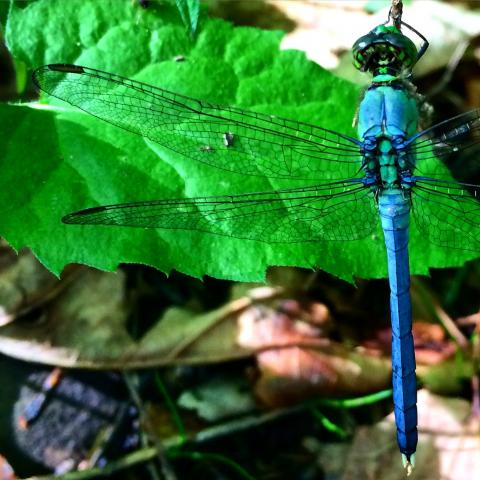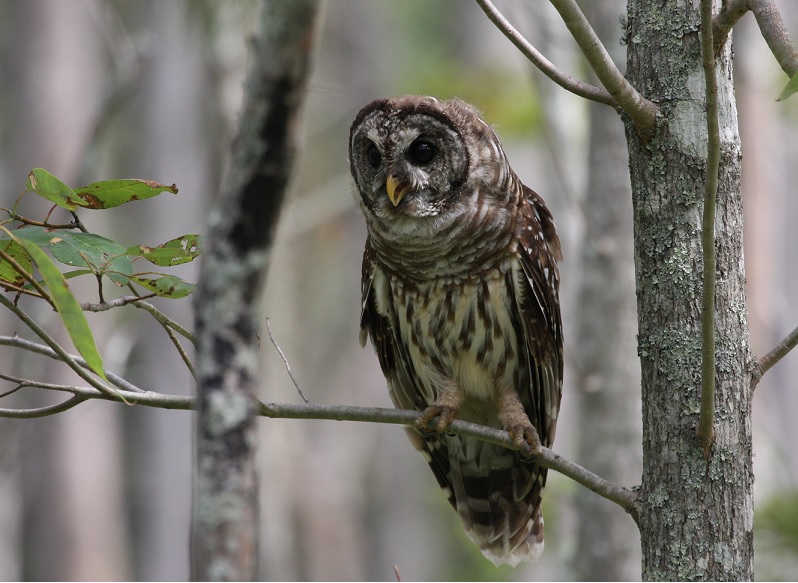Learn More about Wildlife
A remarkable diversity of wildlife is found in the Hudson estuary and its watershed. The region, comprising about 13.5% of the land area of New York State, contains nearly 85% of the bird, mammal, reptile, and amphibian species found in the entire state. In addition to more common species, approximately 150 species in the watershed are listed as threatened, endangered, or of special concern by DEC (Penhollow et al. 2006).
The following resources from program partners and DEC provide detailed wildlife information and conservation recommendations.
State Wildlife Action Plan
In 2002, Congress charged states and territories to develop a State Wildlife Action Plan and required updates every 10 years. The DEC developed its first plan, the New York Comprehensive Wildlife Conservation Strategy in 2005, and subsequently completed a 2015 update, the New York State Wildlife Action Plan. A wildlife action plan serves as a state's guiding document for managing and conserving species and habitats before they become too rare or costly to restore. Collectively, these plans assess the health of a state's wildlife and habitats, identify the problems they face, and outline the actions that are needed to conserve them over the long term.
For the 2015 update, DEC staff and conservation partners completed assessments for 597 species, consolidating information on life history, conservation status, population trends, and threats. This information was used to revise the Species of Greatest Conservation Need (SGCN) list, which includes species that are rare or declining. The 2015 list included:
- 366 SGCN, of which 167 are High Priority SGCN
- 113 additional species categorized as Species of Potential Conservation Need (SPCN), because of insufficient available information to reliably determine their current population status.
Threatened and Endangered Species in New York
Under the authority of the Environmental Conservation Law of New York, the state maintains a list of endangered, threatened, and special concern fish and wildlife species. The list, proposed changes, and updates are available on the DEC website.
Endangered: any native species in imminent danger of extirpation or extinction in New York State.
Threatened: any native species likely to become an endangered species within the foreseeable future in New York State.
Special Concern: any native species for which a welfare concern or risk of endangerment has been documented in New York State. (Current information, collected by the DEC, does not justify listing these species as either endangered or threatened.)
DEC utilizes its authority under the State Environmental Quality Review Act and other permitting authorities to assess potential environmental impacts and make recommendations to project proponents on how to avoid or reduce impacts to endangered and threatened animals. When a project proponent cannot fully avoid adverse impacts to listed species, the regulations regarding issuing a permit under 6 NYCRR Part 182 come into play. The regulations require a permit for any taking of threatened or endangered species. "Taking" is defined in the regulations to include not only the direct killing of listed species, but also actions that are expected to result in harm to individuals, including adverse impacts to habitats occupied by listed species. For more information, including proposed changes or updates to New York's Endangered Species Regulations, visit the DEC website.
Conservation Guides for Rare Animals
The New York Natural Heritage Program’s (NYNHP) online conservation guides are designed to help land managers, decision-makers, planners, scientists, consultants, and the interested public better understand the rare species and natural communities found in New York. There are over 200 animal guides, with details on conservation status, distribution, threats, research and management needs, and identification. Initial development of the guides was funded by the Hudson River Estuary Program.
Biodiversity Assessment Manual for the Hudson River Estuary Corridor
The Biodiversity Assessment Manual was written by Hudsonia Ltd. and published by the DEC in 2001 to help local agencies, citizens, developers, and others identify and protect ecologically-sensitive habitats in the Hudson River estuary watershed. The 508-page, loose-leaf volume includes 38 profiles of animal species and groups of species that deserve conservation consideration in the watershed.
Amphibian & Reptile Atlas Project
The Amphibian & Reptile Atlas Project ("Herp Atlas") was a ten year survey (1990-1999) designed to document the geographic distribution of New York State's herpetofauna. "Herp" is short for herpetofauna, which is the general term for amphibians and reptiles as a group. Frogs, toads, and salamanders are amphibians; turtles, snakes, and lizards are reptiles. There are approximately 70 species of amphibians and reptiles in the state, and the Atlas results reflected the high level of herp diversity in the Hudson Valley.
Breeding Bird Atlas
The Breeding Bird Atlas (BBA) was a comprehensive, five year (2000-2005) survey designed to reveal the distribution of breeding birds in New York. A comparison to results from the 1980-1985 BBA indicated that more than half of the state's 253 species showed a significant change in their distribution, with 70 species showing increases and 58 species showing declines. A new 2020-2024 BBA is underway.
Helpful Links
New York State Wildlife Action Plan (2015)


